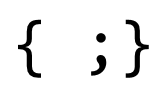Multi-threading in C#: A must have in your programming arsenal (IMO)

You might not need to use multi-threading in all of your C# applications but as a modern software developer, you should make this part of your toolkit.
- Wikipedia best explains what thread is. It also explains the difference between threads and processes and delves into the topic of multi-threading as well, which is what thread is for.
- Benefits of using multi-threading:
- To maintain a responsive user interface.
- To perform CPU bound work while waiting for I/O operations to complete.
- To scale the application using parallel execution.
- Price to pay for using multi-threading:
- Slower execution time on single-processor machines due to context switching.
- Added program complexity.
- Threading (C#) at Microsoft docs describes the basic concurrency and synchronization mechanisms provided by the .NET Framework, but not much example C# code though.
- Threading in C# by Joseph Albahari is a good one as it provides example C# code. It goes through the basics of threading and synchronization in C# which would help you get started writing C# code. Then it talks about the event-based asynchronous pattern (EAP) and lastly about parallel programming.
- C# Programming Examples on Threads is the simplest C# codes I found on C# threading.
- Microsoft recommends using the task-based asynchronous pattern (TAP) though. The async and await keywords in C# support TAP. So I think it would be best to focus on this instead of the older patterns like the event-based asynchronous pattern (EAP) and the asynchronous programming model (APM).
- Parallel Processing and Concurrency in the .NET Framework in Microsoft docs contains links to information about threading, asynchronous programming patterns (both legacies and new) and parallel programming.
- For parallel programming, the Task Parallel Library (TPL) is the center of it all and would be wise to get familiar on this library.